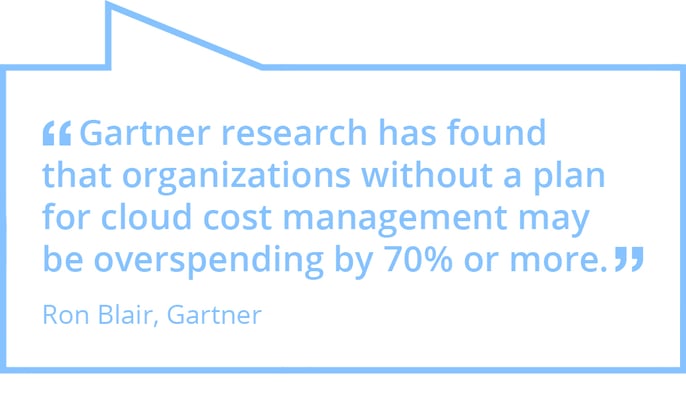A mammoth task lies before us: the optimized use of various IT worlds. The challenge is managing cloud infrastructures and traditional data center landscapes simultaneously. The increasing cloud proportion is creating entirely new challenges with respect to compliance, cost control, and transparency. Gartner analysts predict that the ratio of “on premises” systems to cloud services will change dramatically in the next five years. It is therefore time to think about a way to link the two worlds in a manner that is as future-proof as possible. Hybrid cloud computing provides such a method. Our overview reveals the opportunities and challenges of this new technology.
Hybrid cloud computing – what is it?
The structure, implementation, and maturation of cloud strategies will remain at the top of CIOs’ agendas for the next several years. Gartner advises focusing on setting up a flexible infrastructure. If, like Gartner, you assume that the proportion of “on premises” enterprise system operation will continuously fall from its current level of 80% to 30% in 2025, but not be entirely replaced, the hybrid cloud seems the most likely approach to promise success. Hybrid cloud computing not only bridges the gap between the traditional data center and various cloud services (public cloud), but does the best job of combining the two. The hybrid cloud target scenario is an integrated, scalable, secure platform for seamless provision and use of business applications or other technology services originating from internal or external sources. Users and customers rely on agile, automated services, many of them cloud-based and self-service oriented.
The advantages are obvious, especially
- the great flexibility and reasonable cost models of the public cloud
- a high degree of security and data protection in your own data center
- short-notice booking of additional computing and storage capacity
But many of these advantages remain unused because companies do not have a sufficient overview of the resources they are using. If the infrastructure of the company’s own data center is already being carefully managed, the necessity of a general overview becomes even more urgent as soon as various additional cloud infrastructures are combined in the company. Implementing a hybrid cloud requires tackling commercial, technical, and security-related challenges.
Hybrid cloud management – the four challenges for IT
Let’s consider cost first. This year, Gartner estimates, 80% of organizations will exceed their cloud IaaS budgets because they have no cost-optimization approach. Companies without a plan for cloud cost management may be overspending by 70% or more.

There are many reasons for the explosion of costs. The cloud’s flexibility usually leads to usage overkill. Many users do not cancel computing capacity or storage, nor do they return licenses they no longer need. And then there is the broad range of cloud infrastructure provider pricing models, with billing details varying widely from provider to provider. Those using discounted cloud provider programs or so-called reserved instances can save a great deal of money.
IT needs cost transparency and control tools to answer questions such as the following:
- Is there a proven model for usage-based cost billing, including for cloud services?
- How can many cloud service offers be economically optimized?
- What cloud resources (hardware or software) are fully paid for, but not used to full capacity (or completely unused)?
- How can cloud infrastructure costs be distributed among services or projects, and how can service unit costs be simply determined and planned?
- Can a target/actual comparison (planning costs and actual costs) be performed at the touch of a button?
Cost transparency can be had only if the entire IT landscape and structure is transparent. IT departments today are familiar with only parts of the infrastructure that specialist departments have independently contracted with cloud providers for. Only complete familiarity with the IT infrastructure allows effective resource allocation. The following items are among those to be considered:
- Central registration and representation options for cloud components and IT components in the company’s own data center and their interrelationships and interdependencies
- Management of all cloud infrastructures and cloud software across their entire life cycle, from request to approval to instantiation to closing down cloud instances.
- Monitoring of actual cloud infrastructure usage for the purpose of identifying unused capacity and closing it down
A third central challenge is securing guidance and compliance. Are the specialist departments familiar with the corporate cloud policy, approved cloud providers, and countries in which your company’s IT infrastructure may be hosted? And does the central IT department know where applications and data are located and who has access to them? There is also often no process to ensure that former employees no longer have access to company data in the cloud.
Conditions for compliance include
- Complete transparency of cloud infrastructure components that have been requested and are in use
- Reporting on fulfillment of the requirements in the company’s individual cloud policy
- Comparison of licensed software to that which is actually installed
- Display of deviations if there is underlicensing, overlicensing, or unauthorized installations
Finally, effectiveness in the organization is an important success factor for functioning hybrid cloud management. IT departments require the expertise necessary for managing hybrid environments in order to integrate a number of services of various origins and characteristics into a unified provision and monitoring concept. There are too often redundant operating structures for managing cloud and data center infrastructures. The necessary efficiency requires adapting organizational structures and integrating cloud management into the previous IT service management system. Internal IT departments in particular must develop their own hybrid cloud expertise and use tools that can manage the two worlds simultaneously. Gartner expects that in 2022, companies will operate about 60% of their infrastructure with cloud providers.